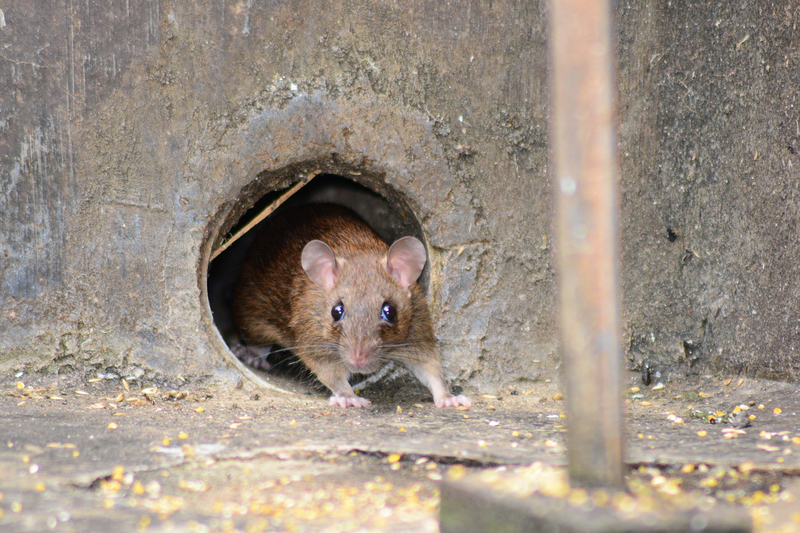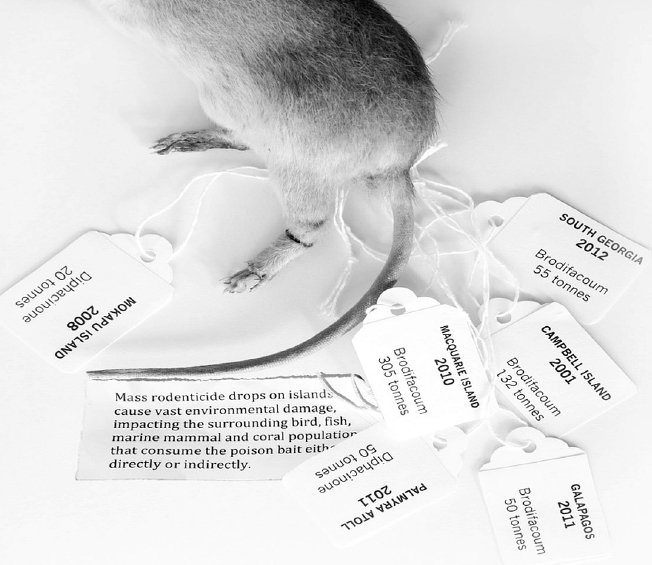Children, pests and poisons: a toxic layering
27 July 2020 | Story Ambre Nicolson. Read time >10 min.
Why are more and more children in Cape Town’s informal settlements being accidentally poisoned by illegal pesticides? This is the question that a multi-disciplinary group of researchers from the University of Cape Town (UCT) has spent the past 10 years working to understand. Along the way their work has also served as an example of a burgeoning health humanities in the global south.
Street pesticides for sale
In 2008, a non-governmental organisation based in Cape Town, South Africa, and working in the city’s informal settlements got in touch with Professor Andrea Rother, head of the Environmental Health Division in the School of Public Health and Family Medicine at UCT and a global authority on pesticides.
“They were worried about the economic viability of informal vendors selling street pesticides but they were not aware of the health risks for the vendor and people who buy these substances” she says. “Street pesticides are either legal agricultural products that are repurposed by informal traders and sold illegally in urban townships around Cape Town or they are packaged in other countries and not registered for legal use in South Africa. Residents buy these products to try and protect their homes and children from pests, such as rats and cockroaches, which are extensive in low income communities.
“Unfortunately, these highly toxic substances – often banned in high-income countries or not registered for household use – are also being consumed accidently by children.”
“These highly toxic substances – often banned in high-income countries or not registered for household use – are also being consumed accidently by children.”
Rother then sourced funding from the Medical Research Council to conduct ground-breaking research on street pesticides, for which she later won the 2010 UCT Social Responsiveness Award.
Around the same time, Associate Professor Susan Levine, a UCT-based medical anthropologist, was searching for a way to work across faculties in a multi-disciplinary way.
Rother invited Levine to join the research, along with a research team that soon included Drs Cindy Stephen and Kate Balme from the Red Cross War Memorial Children’s Hospital Poison Unit, public health officials such as Environmental Health Practitioners and Associate Professor Fritha Langerman, an artist based at the UCT Michaelis School of Fine Art, who joined the team after work she did on an exhibition in which the close relationship between rats and humans became apparent.
Together, their data drew on observational research done by Alison Swartz at the Red Cross War Memorial Children’s Hospital in 2008. At the time, Swartz was part of the first intake for a UCT honours course that brought together students from anthropology and public health.
“Working together, anthropology students, master of public health students and field workers from the research communities conducted household surveys to discover the extent of pest problems in the townships of Cape Town, what residents did to try and rid their homes of pests such as rats and whether they had ever experienced poisoning,” says Rother.
As Levine highlights, “the anthropology and public health students also did observational work, including walking around the township paying attention to the surrounding environment. Using this mixed-method approach the group was able to generate a large amount of embodied knowledge.”
Vulnerable children
The team identified different kinds of street pesticides sold by informal vendors, including Aldicarb – a highly toxic agricultural pesticide meant for killing nematodes (worms) that is sold in strips of small black pellets to kill rats – and various organophosphates that are neurotoxins – these widely used insecticides were removed from legal consumer products because of their high toxicity. The study results were influential in the banning of Aldicarb in South Africa. Some of the pesticides sold are bought legally from agricultural cooperatives and then decanted into common beverage bottles. But tracing the origins of some of the other pesticides proved more difficult.
“But we do know exactly where these street pesticides end up: in the guts of children and rats,” Levine explains.
In a 2018 article published in The BMJ, co-authors Levine, Rother, Langerman and Swartz explained that while parents often buy street pesticides in a bid to keep their children safe from contaminated food or rat bites, their children become vulnerable to being poisoned. This is because street pesticides like Aldicarb are often mixed with bread or maizemeal to bait the rodents and put on the floor or in corners of shacks where curious toddlers mistake them for food.
“We do know exactly where these street pesticides end up: in the guts of children and rats.”
In the case of older children, many accidentally drink these poisons sold in unlabeled and recycled bottles, mistaking them for water or milk.
Systemic violence
As an anthropologist and activist, Levine believes that this nexus of pests, poisons and parents protecting their children and homes is directly the result of the political economy of South Africa’s poor, urban spaces.
“When we interviewed mothers living in these circumstances, they made it clear that while they found the possibility of their children being exposed to poisons frightening and hurtful, this was just one challenge among many other structural inequalities and dangers they faced every day,” she says.
“These include crime and a lack of sanitation, housing and clean drinking water. In this context, child poisonings like this are in fact a form of easily preventable structural violence.”
From research to action
Rother, as an environmental health researcher, points to the public health interventions that have resulted from this research with the input from the multidisciplinary team members.

“Our research showed that environmental health practitioners needed materials to communicate with communities about the dangers of these poisons,” she says. “To answer this need, we put together a reference group – made up of environmental health specialists and practitioners, anthropologists, doctors, students - that has produced flip charts for health workers, as well as magnets with the contact details of the Poisons Unit.
“We also put together a book of recipes for non-toxic alternatives to these poisons.”
Rother’s team have developed training workshops, locally and in other parts of South Africa, and worked with physicians at hospitals and forensic pathologists at mortuaries to underscore the need for capturing detailed case notes that include the exact substance that caused the poisoning.
“This is to help create a closed loop where our research feeds back into clinical work to improve diagnosis and treatment of unlabeled pesticides, and that this work can also be used to advocate for more research and resources to prevent the use of street pesticides , particularly in urban communities in South Africa that are already stressed by poverty, and inadequate housing and services,” Rother says.
A case of sharing and gaining knowledge
Rother and Levine agree that the research has also proven to be an interesting case study in a trans-disciplinary, health–humanities approach.
“This project is a perfect example of the symbiosis between research and pedagogy, as well as how a productive tension between disciplines can be valuable in lifting out solutions,” Levine says.
“A health–humanities approach embodies the idea of epistemic generosity, which is a powerful tool to effect change.”
Langerman agrees: “I believe that artists are able to present an open-ended perspective that is not bound by disciplinary considerations. Artists are able to provoke without presenting conclusive statements. My own concerns are that establishing hierarchies of species desirability are dangerous, and ultimately negatively impact the society that creates them,” she explains.
Levine also sees the project as an example of the nuance and complexity that a health–humanities approach can create.
“Epistemic generosity is the opposite of epistemic arrogance or the idea that my way of knowing the world has precedence over others. A health–humanities approach embodies the idea of epistemic generosity, which is a powerful tool to effect change.
“Epistemic generosity is an idea that allows for people to reach out across disciplinary silos to say that my knowledge is one part of a bigger picture,” she continues. “If you start from this point when you enter into a research partnership, the space has already been created for productive collaboration, and that means together we can solve problems better.”
Download the journal article Toxic layering through three disciplinary lenses: childhood poisoning and street pesticide use in Cape Town, South Africa, by Alison Swartz, Susan Levine, Hanna-Andrea Rother, Fritha Langerman.
 This work is licensed under a Creative Commons Attribution-NoDerivatives 4.0 International License.
This work is licensed under a Creative Commons Attribution-NoDerivatives 4.0 International License.
Please view the republishing articles page for more information.










